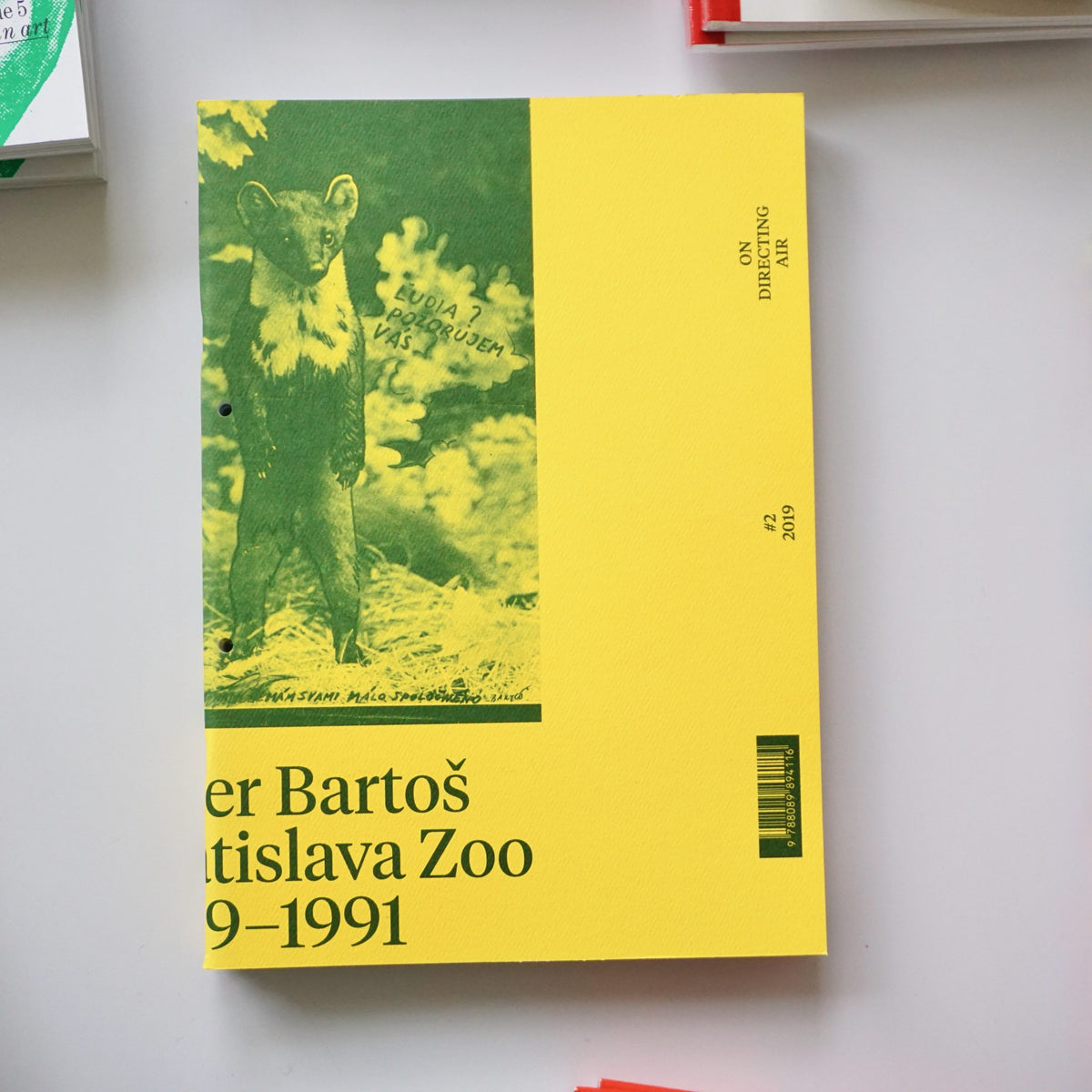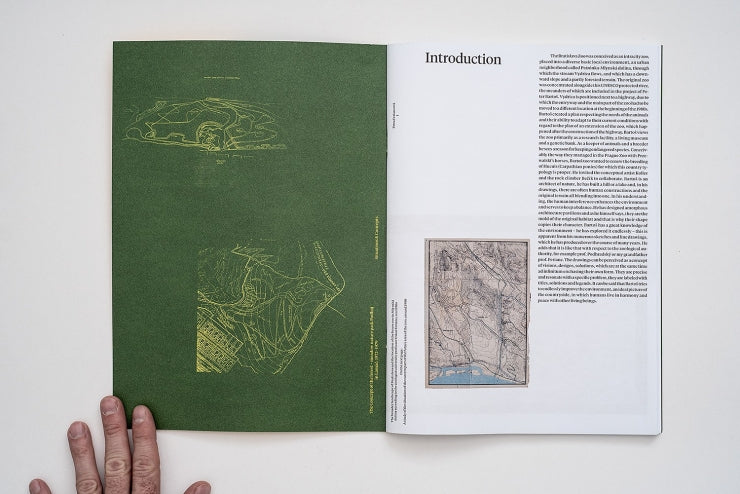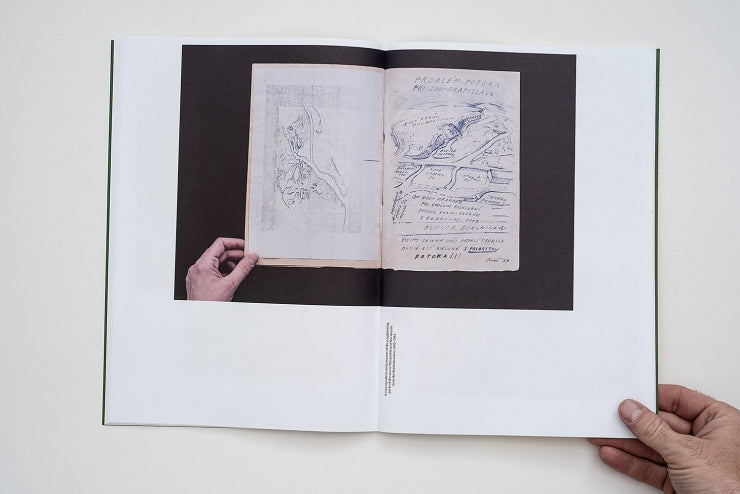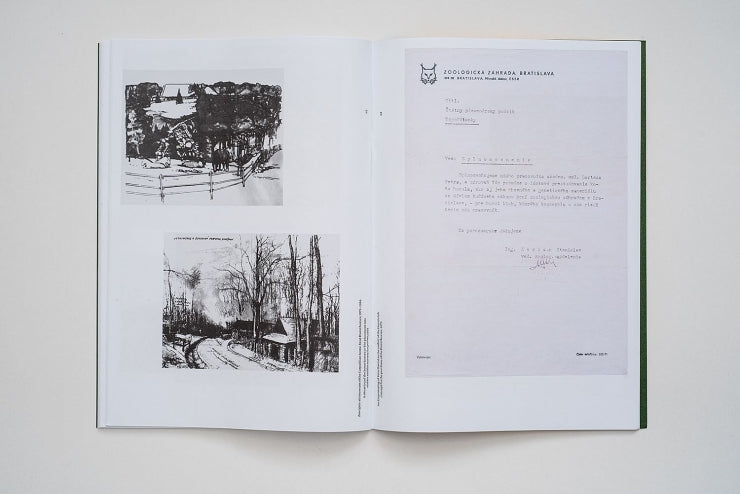



ON DIRECTING AIR #2: BRATISLAVA ZOO 1979-1991 by Petra Feriancová, Peter Bartoš, Mira Keratová, Borbála Soós
| Title | On Directing Air #2: Bratislava Zoo 1979-1991 |
| Author(s)/Editor(s) | Petra Feriancová, Peter Bartoš, Mira Keratová, Borbála Soós |
| Publisher | Archiving Air Press |
| Pages | 72 |
| Dimensions |
210 x 298 mm |
| Format | Softcover |
| Year | 2019 |
The subject of On Directing Air #2 is the Bratislava Zoo in Slovakia and the work of Peter Bartoš who was the resident conceptual artists at the zoo from 1971 to 1990, developing models for the spatial layout of the grounds and designing various living environments for the animals. Many of Bartoš's works, which often evolve and grow more complex over the course of decades, intertwine questions of ecological planning and the shaping of natural settings with issues of liberty and privacy in connection with (national and political) boundaries.
"The Bratislava zoo was conceived as an intracity zoo, placed into a diverse basic local government, an urban neighborhood called Patrónka-Mlynská dolina, through which the stream Vydrica flows, and which has a downward slope and a partly forested terrain. The original zoo was concentrated alongside this UNESCO protected river, the meanders of which are included in the project of P. Bartoš. Vydrica is positioned next to a highway, due to which the entryway and the main part of the zoo had to be moved to a different location at the beginning of the 80s. Bartoš created a plan respecting the needs of the animals and their ability to adapt to their current conditions with regard to the plan of an extension of the zoo, which happened after the construction of the highway.
Bartoš views the zoo primarily as a research facility, a living museum and a genetic bank. As a keeper of animals and a breeder he sees a reason for keeping endangered species. Conceivably the way they managed in the Prague zoo with Przewalski’s horses, Bartoš too wants to renew the breeding of Huculs (Carpathian ponies) for which this country typology is proper. He invites the conceptual artist Koller and the rock climber Bečík. Bartoš is an architect of nature, he builds a hill or a lake and, in his drawings, there are often human constructions and the original terrain all blending into one. In his understanding, the human interference enhances the environment and serves to keep a balance. He designs amorphous architecture pavilions and as he himself says, they are the mold of the original environment and that is why their shape copies their character. Bartoš has a great knowledge of the environment – he has explored it endlessly – this is apparent from his numerous sketches and line drawings, which he has produced over the course of many years. He adds that it is like that with respect to the zoological authority, for example prof. Podhradský or my grandfather prof. Ferianc. The drawings can be perceived as a concept of visions, designs, solutions, which are at the same time ad infinitum enchasing their own form. They are precise and resonate with a specific problem, they are labeled with titles, solutions and legends. It can be said that Bartoš tries to endlessly improve the environment, an ideal picture of the countryside, in which human beings live in harmony and peace with other living beings."
-
Title
On Directing Air #2: Bratislava Zoo 1979–1991
-
Author / Editor
Petra Feriancová
-
Publisher
Archiving Air Press
-
Pages
72
-
Dimensions
210 x 298mm
-
Format
Softcover
-
Year
2019
Shipping Terms
Recommended last orders
United Kingdom: Tuesday 17 December
We highly recommend placing orders for Christmas as early as you can.
Delivery
We aim to process orders within 1–2 working days. Orders placed on a Saturday and Sunday will be processed from the next working day. If you need something in a hurry please call or email us before placing an order to ensure the item is in stock.
UK
All mainland UK orders are sent using Royal Mail, which usually arrives within 1–2 working days after despatch. We use Parcelforce and DHL on heavier or bulkier orders, which can take 2 working days to arrive. Royal Mail Signed For, Parcelforce and DHL all require a signature as proof of delivery. Please note that postage costs for addresses that are not mainland UK may vary.
European Union and Single Market
Please note that due to the introduction of the General Product Safety Regulation (GPSR) in December 2024, we are no longer able to ship to the EU and Single Market (including Northern Ireland). This does not affect items such as workshop bookings, Studio Passes, or Gift Vouchers.
International
Please note that LCBA cannot be held responsible for any import duties, taxes or delays in processing once your order arrives in-country. It is important that international orders include a contact telephone number and email address at checkout in the instance that the carrier needs to contact you for taxes and/or duties to be paid.
Out of Stock
We make every effort to ensure all products are in stock, but in the event of us not having your chosen product we will contact you and offer either a refund or a split- or later delivery if possible.
Returns
We hope you are happy with your purchases from London Centre for Book Arts, but if not, we can offer a refund on any item as long as it is returned in a saleable condition within 30 days of receiving your item. Please note that we are unable to reimburse postage costs for returns. For further information, or to make a return, write to us atorders@londonbookarts.org.